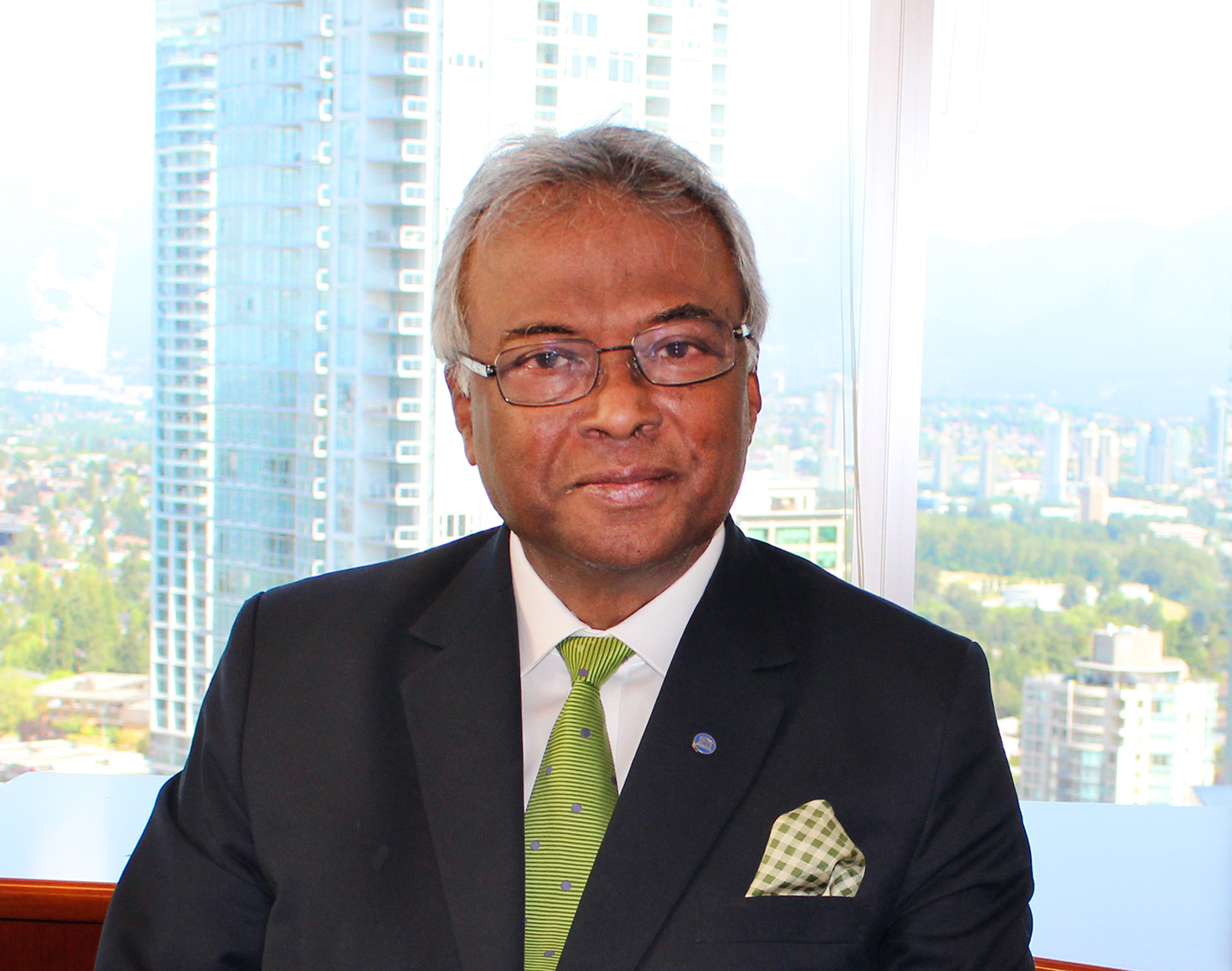
Mr Armoogum Parsuramen, Founder-President of Global Rainbow Foundation (GRF), Mauritius, visited COL on executive secondment from 10 to 14 June 2019. He set out to assist COL in developing a disability strategy and action plan.
During his visit, Mr Parsuramen sat down for an interview to explain how organisations can prioritise accessibility and inclusion and get started on a disability strategy.
Q: Can you describe your work at Global Rainbow Foundation?
A: When I retired in 2011, I had a desire to do something different. There was an inner voice telling me that it was time to give back. I created Global Rainbow Foundation as a channel to touch the lives of people from the most vulnerable groups. More specifically, I chose Persons with Disabilities (PWDs). Our mission for the past eight years has been to concentrate our efforts in helping PWDs in various ways, so they are empowered, they have dignity, and they are able to be independent.
Q: You have worked extensively with visually-impaired individuals. Can you tell us about that work in particular?
A: PWDs, especially those who are visually impaired, suffer a lot of setbacks because they are very often excluded. Not enough provision is made for their education and they don’t have access to assistive technologies. We decided to have a special program to support people with visual impairment in education. We give them assistive devices, such as laptops with the appropriate software, smartphones, smart canes, a set of gadgets, plus the necessary training so they can manage on their own.
Q: What inspired you to devote so much of your life’s work to accessibility and inclusion?
A: There were two major things in my life which marked my new mission. The first was my own childhood. My mother was illiterate, and my father had three years in primary [school] and came from a family of eleven children. I had to go through tremendous struggle to reach where I am today. Deep inside all along, there was a desire to see what I could do to help other people. The second thing which marked my life and gave me a clear sense of direction was my meeting with Mother Teresa in 1994 in Calcutta. When I saw what she was doing, when I saw the heart she had for service to humanity, I felt that it was something we all must contribute. In all humility, I wanted to use my network, all the experience I have accumulated, all that I have been able to gather in life and use these in service of the most vulnerable people in society.
Q: Why is it important for organisations to prioritise accessibility and inclusion and have a disability strategy?
A: In the world today, almost 15 percent of the population suffers from some form of disability. That’s almost one billion individuals. We cannot be insensitive to that situation. Any organisation serving the world cannot stay away from the issue of serving PWDs. These individuals are part of the population, they have legitimate rights and they have a lot of potential. We need not look at them as having a disability but look at the abilities within them. I would like to quote Robert Hensel when he says, “I choose not to put ‘dis’ in my ‘ability.'”
Q: What are the first steps an organisation can take to develop a disability strategic plan?
A: We have the UN Convention on the Rights of Persons with Disabilities which is endorsed by the whole world, so we don’t start from nothing. This is the framework and many countries and organisations have been working within the framework to develop their strategy in line with their activities. They have made a lot of progress and it’s not difficult now. An organisation can look at its activities, and how its programs can be made adaptable and accessible to PWDs.
Q: What are the top 3-5 priority areas to focus on when it comes to improving accessibility within an organisation?
A: One of the most important things in the modern world is web accessibility. That should be one main mission. The second is to develop all the organisation’s materials in an accessible format. A blind person cannot go to your website and benefit. So, you have to adapt and use the available technology. The third thing is to provide regular support to your community, to your beneficiaries, and to facilitate them in accessing materials. I believe these are the three main considerations that can greatly help an organisation in offering its services inclusively.
Looking for more? Watch the vlog interview with Armoogum Parsuramen.


